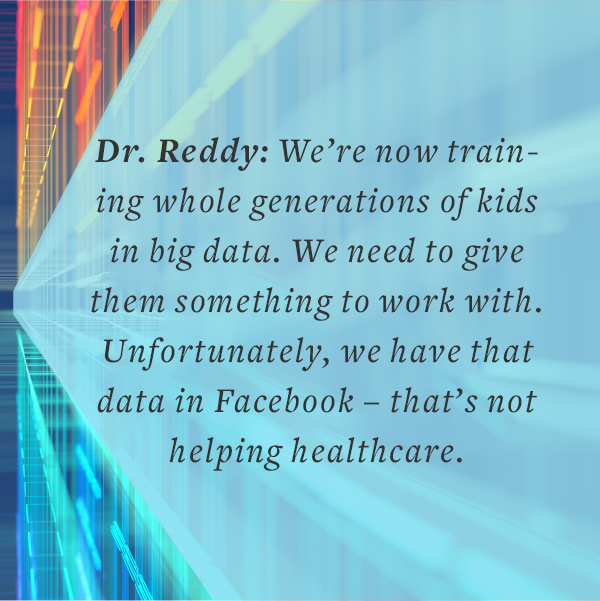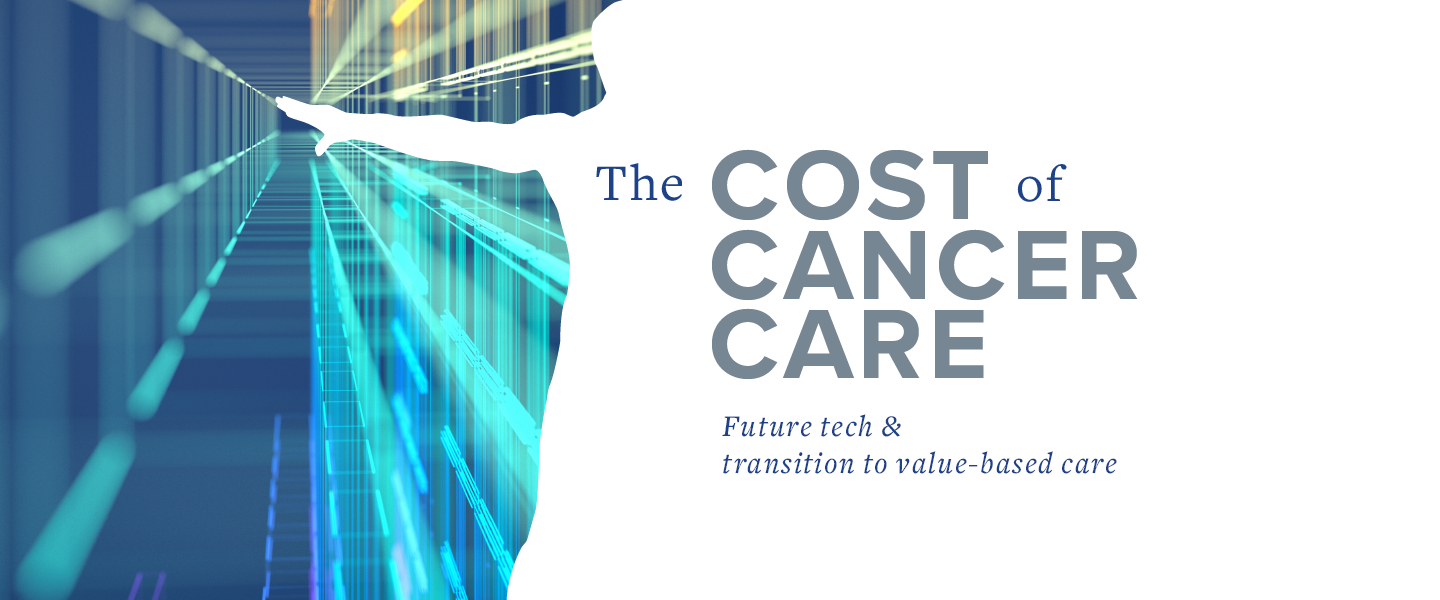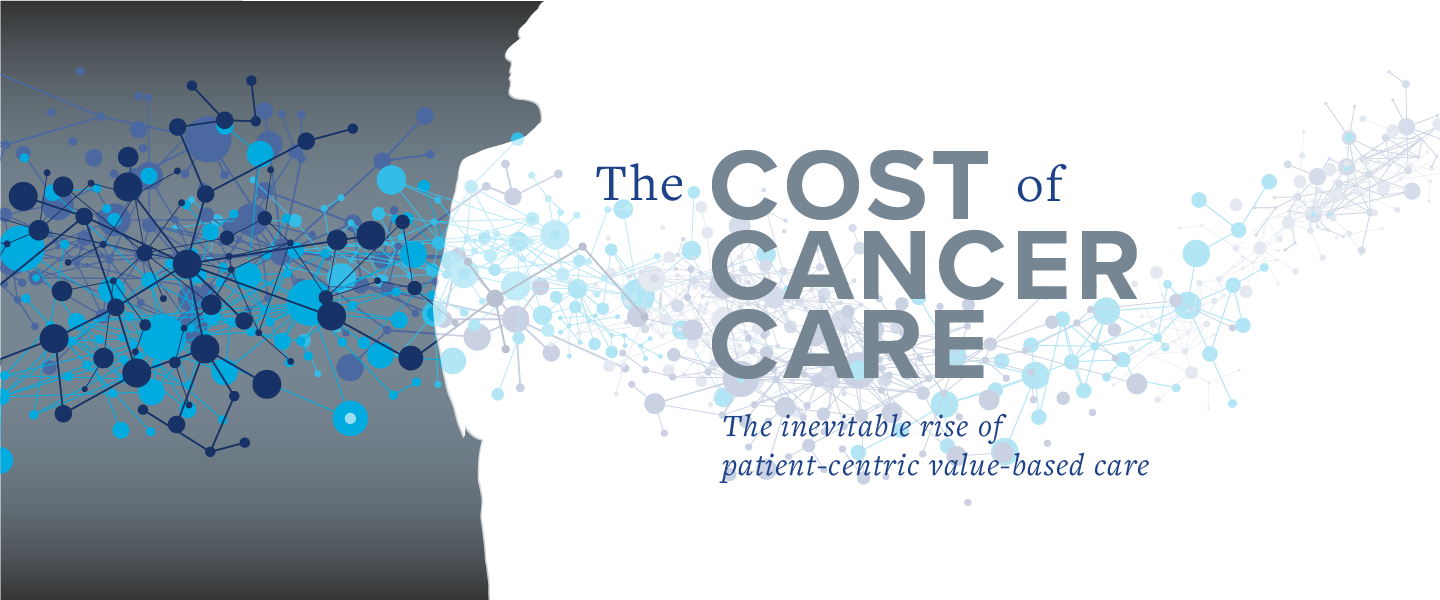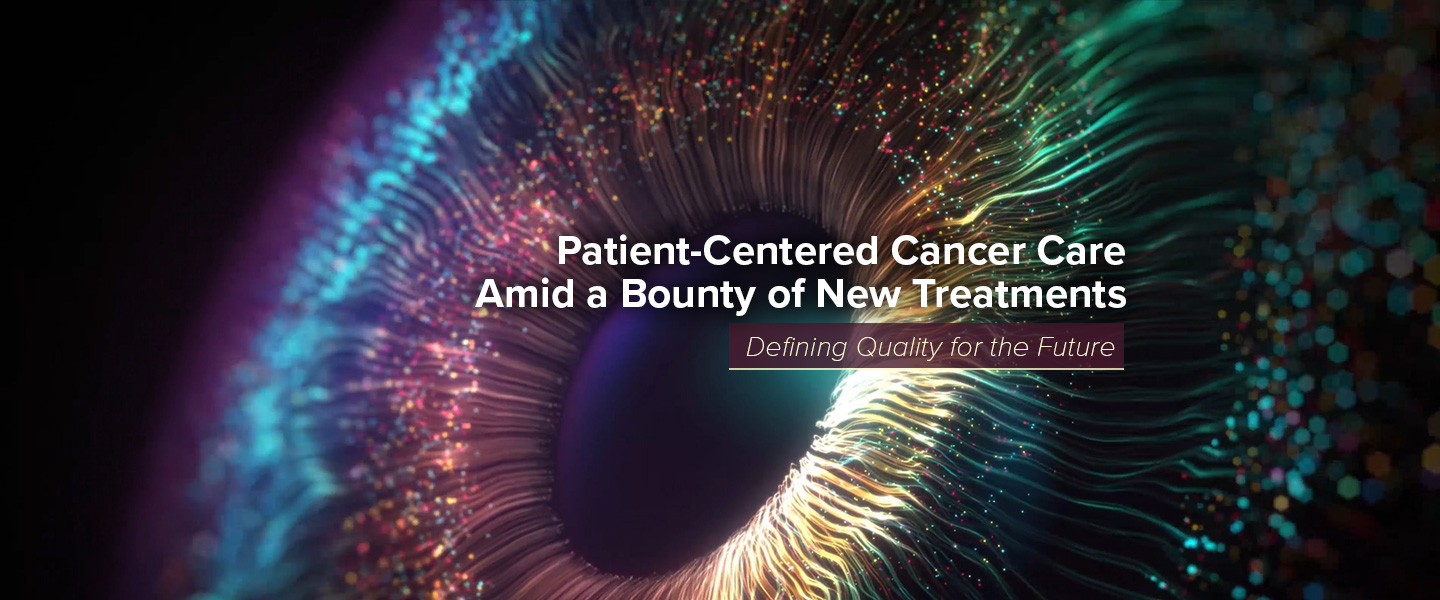In the final installment of our four-part webinar on “The Evolution of Value-Based Care: A Shift to Patient-Centric Care,” we close the series with NantHealth Chief Medical Officer Dr. Sandeep “Bobby” Reddy, where he discusses how tech helps the transition to value-based care.
NH: How and what tech do you think will help the transition to value-based care?
Dr. Reddy: There are a couple of things from a technology perspective today that I think are very clear, and maybe some less clear things. We all have a wearable device. It may not be wearable – your phone is essentially a wearable device, as everyone is carrying one around with them. Now we have smartwatches. The concept of being able to monitor activity, vital signs, and other health-related functions, that’s a genuine concept we can do today. Being able to track people’s movements, their blood pressure, their pulse, we can understand whether or not they’re smoking because their activity patterns change. This idea is quite fascinating in terms of modulating behavior. If we want people to stop doing bad things, this is a way to reinforce that. That kind of real-time monitoring with the ability to get feedback, I think, is something that we can do.
The other piece of value-based care that is critical that we talk about is having it be a partnership. It’s not just a partnership between the provider and the payer. Still, the patient has to enter into that loop as well, and the whole environment around that patient – the societal environment. From a technology standpoint, we can do that. We can create an environment that is conducive to better healthcare, where we’re suggesting to people to exercise and not consume sugary sodas. When you go to buy that sugary soda, and you put your credit card in the vending machine, you should get a text that reads, “choose the water.” These are things that we can do; they’re simple and doable.
It may sound laughable, but other countries in the world do this today. For example, in South Africa, it’s an interesting situation where the laws are a bit different. Insurance providers can also be banks and vice versa. In the United States, we have regulatory requirements that preclude that. As a result, the insurance providers are actually issuers of credit cards. When you use your credit card to buy something that your insurance provider might think is not necessarily the best health choice for you, they’re aware, and they can send you real-time messages. That’s a future state that we can reach.

NH: It almost sounds like by understanding human behavior and how that patient actually lives their lives, we can better enable value-based care.
Dr. Reddy: That’s exactly right. When people fill out surveys and forms, I think people do that honestly. We have large population studies, like the Framingham [Heart] Study or the Women’s Health Initiative study. But your retrospective of what you ate yesterday is never as good as collecting that data prospectively in real-time. This is going to lead to better, cleaner data sources and more accurate representations of what is happening, and that’s going to allow us to build better models and better plans in the future to improve quality of life in healthcare.
NH: How do we harness all of the data that we’re able to collect and the information that goes into it, to improve the overall patient experience?
Dr. Reddy: The first part of that is we have to break down data silos. There’s a lot of data that is being collected, but it’s all in its silo. Of course, this is very troubling and difficult. It would be useful to be able to integrate data into a comprehensive data database [in which] we can build relationships between those data elements, whether that comes through a federally financed national project or some co-op between sources of data. That’s the first step. Pieces of data are out there right now, but they’re all independent. If we can put those together, that would be valuable.
I know that it can be very challenging sometimes to have that conversation with the stakeholders, the data holders. Everyone feels like their data is valuable and that it is a monetizable commodity. In and of itself, it really isn’t. It needs to be put together and structured in a manner in which it can be used. When I look at claims data, it’s not perfect, but it is a source of knowing what’s going on with the patient. When I look at EMR data, certainly, it’s not perfect, but it’s a source of getting data on a patient. We don’t always get prescription data, so we need to get prescription data to understand what people are filling. You might generate a prescription in the EMR, but it’s not being filled. The claims data can tell you [whether] people are going to the ER. If all of that can be put together, that’s the first step. Then I think we can do real analysis. We’re now training whole generations of kids in big data. We need to give them something to work with. Unfortunately, we have that data in Facebook – that’s not helping healthcare. Let’s get that data, let’s put it in a structure that people can use, and that would be beneficial.
NH: How does each stakeholder – payer, provider, patient – fit into the shift towards value-based care?
Dr. Reddy: Each stakeholder has to be accountable for what they can control and be sufficiently motivated to create progress. Let’s take those stakeholders one by one. With the provider, accountability around that is if there is a financial incentive, then I think people behave differently. We know this, this is not new. That’s what capitalism is based on. If there is a financial incentive to have better outcomes, we’re probably going to move to better outcomes. If there was a disincentive, I think we wouldn’t have better outcomes; we’d have worse outcomes. That’s an important piece, though, because in a fee-for-service environment that we’ve been used to, it’s hard to say that there’s an incentive to move the needle there. With accountable care, value-based care, that’s a movement to bring this stakeholder to the table.
Similarly, the payer has to make that fair. When we create unfair structures, where the only player can be a massive entity because you can only do it at scale, that’s not going to work. The only way that can work is if we have nationalized healthcare. Until we have nationalized healthcare that’s not going to work. We have to look at structures that can bring in more stakeholders. I think that’s where the software tools can work because they can democratize this. If you have a web-based software platform, you can be a single doctor out in the sticks, and still have access to high-quality, first-world, best-evidence, good quality of care, and potentially leverage that for economic improvement. You don’t have to be part of a 10,000-member group. That is something that’s critical. Payers have to be willing to look at that and understand that they can’t just run programs and pilot programs with the largest entity in the state. It really has to be complete and total and bring in all of those other providers and stakeholders who might be small, but in total, they’re big. That’s actually the bulk of where healthcare is delivered.
The last stakeholder is the patient. At the end of the day, we’re all patients, and we’re all people, we’re all going to get sick. I think incentives help; I think tools help. Making it easy is the critical thing. We know that when things are hard, we don’t do them, we’re human. Anything that we can do to make it easy and part of your normal day is going to require maybe a reengineering of society as a whole, where we’re more accepting of people taking the necessary time and spend five minutes to look at the notice that says to do this for my healthcare, rather than being only focused on work, work, work. All of the stakeholders could be brought together. I think we can do this.








